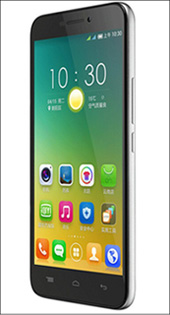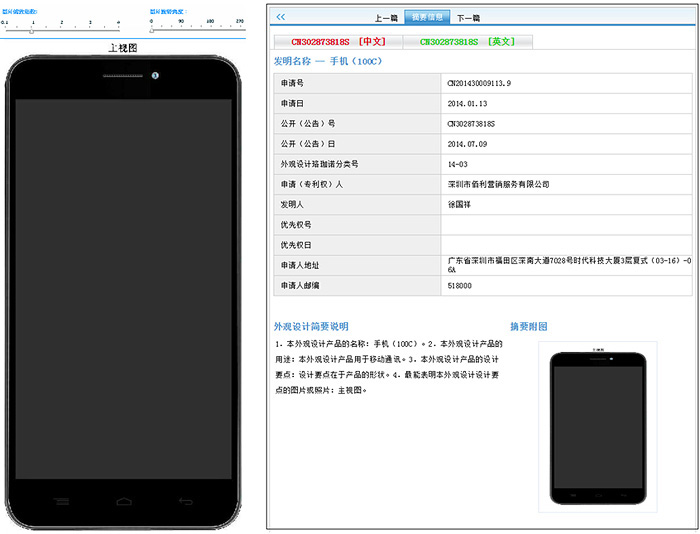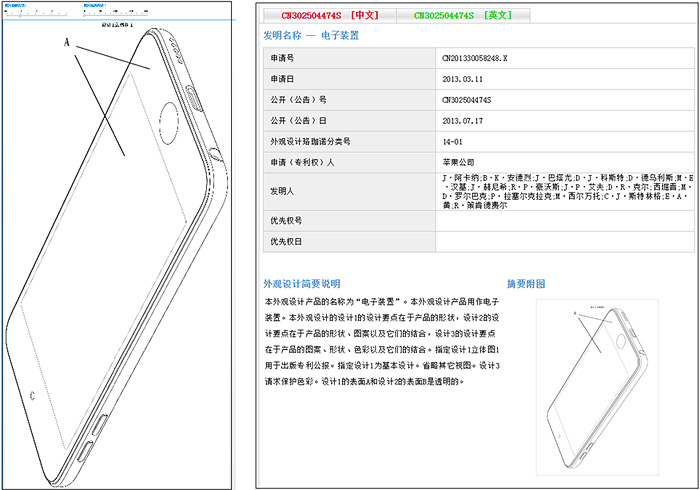
The Beijing Intellectual Property Office (BJIPO) has ordered Apple to stop selling its iPhone 6 and iPhone 6 Plus in Beijing since May, as the office has suggested that the two iPhone 6 models are too similar in appearance to local Chinese cell phone the 100C. When a government agency in China believes a product to infringe the intellectual property of another product, they can enforce it autonomously, without a court decision. This is called “administrative protection” – a unique policy adopted in China to deal with patent infringement – which we introduced in our last issue.
The Wall Street Journal used the subheading “iPhone patent case adds to increasingly tough environment for Western companies” in an article on the case published on June 17. This suggests that “administrative protection” is a protectionist measure targeting Western firms. The BJIPO stated, for example, that “on comparing the 100C handset with the two iPhone 6 models, only small visible differences were found, which led us to the decision that the iPhone 6 and the iPhone 6 Plus infringe the 100C handset’s patent.” The infringer does have the right to appeal the decision at China’s IP court, and this is what Apple is now doing.
Similar?
The holder of the contested patent (patent number ZL201430009113.9) is Shenzhen Baili, a small Chinese brand. The 100C handset, shown in Figure 1, seems to resemble an Android phone more than an iPhone. The designer of the handset took to Weibo – China’s version of Twitter – to point out “similarities” between the iPhone 6 models and his phone, including the streamlined curvature of the edge of the handset cover, as well as the style and positioning of the rear camera and the thickness of the device etc. The features mentioned are not new to the iPhone 6 series, however, as they also feature in former iPhone models.
Figure 1. The abstract of the 100C handset: Design Patent (Patent number ZL201430009113.9)

Source: SIPO
Apple presented the iPhone 6 in the US on September 9, 2014. Shenzhen Baili sent Apple a legal notice within three months of the launch of the iPhone 6. Apple filed a design patent for the iPhone 6 series with the USPTO on May 5, 2014 (patent number USD731481). Apple filed the same patent design with the State Intellectual Property Office (SIPO) on October 31- two months after the launch of the iPhone 6. However, Shenzhen Baili filed the design patent with SIPO on January 13, 2014-much earlier than Apple-both in the US or China.
However, as mentioned above, the external design of the iPhone 6 series has a certain amount of continuity with the previous iPhone series. An earlier design patent filed by Apple with SIPO (patent number CN302504474S) on March 11, 2013, is shown in Figure 2.
Figure 2: Abstract of Apple’s “Electronic Device” Design Patent (Patent number CN302504474S)

Source: SIPO
When compared with earlier iPhone products, such as the iPhone 4, the greatest difference in the design specified in patent CN302504474S is the emphasis on the curved design of the side of the handset, which is similar to the streamlined look of the iPhone 6.
‘The Average Consumer’
The BJIPO did not clearly explain the similarities between the handsets, simply stating the reason for the decision as follows: “although there are differences between the products of the infringer and the patent owner, they are minor and negligible differences that the average consumer would not be able to discern.”
In order to invalidate Shenzhen Baili’s design patent, Apple commissioned a market research company in Beijing to conduct a survey targeting consumers between the ages of 18 and 60 that have purchased handsets at a price of over RMB601 (US$91). However, the survey was disregarded by the court.
Administrative enforcement is not a final decision, however, and it is common for the IP court to overturn administration decisions. Administrative enforcement is also only effective within the area administrated by the agency in question, which is why the BJIPO was only able to enforce the injunction order within the Beijing area and not nationwide.
| Author: |
Anita Li |
| Current Post: |
Chief Editor, NAIP Newsletter |
| Education: |
MA Journalism, China Culture University (Taiwan) |
| Prior Posts: |
Chief Editor, Solid State Technology -Taiwan
Chief Editor, CompuTrade International
Overseas Correspondent, Dempa Shinbun |
|
|
|
| Facebook |
|
Follow the IP Observer on our FB Page |
|
|
|
|
|
|



